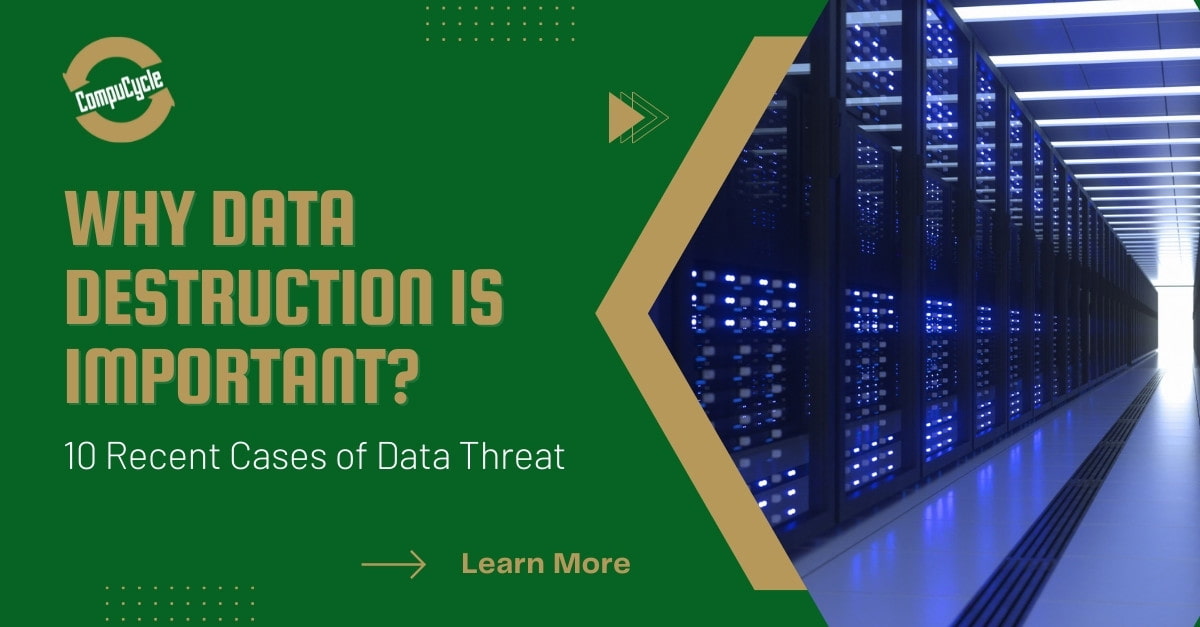The Effect of Effective Data Destruction on Cyber Security Danger Administration
The Effect of Effective Data Destruction on Cyber Security Danger Administration
Blog Article
The Relevance of Effective Information Destruction Practices in Safeguarding Sensitive Details and Ensuring Computer System Safety And Security
In a period where data breaches are significantly typical, the significance of efficient data devastation methods can not be overstated. Implementing durable data devastation approaches not only reduces these risks yet likewise aligns with lawful compliance requirements, making certain that organizations copyright their track record and foster customer depend on.
Understanding Data Destruction
Comprehending data destruction is crucial in today's electronic landscape, where sensitive info can easily be compromised. Reliable information damage entails not merely making sure however removing data that information is irretrievable through comprehensive methods. This process is crucial for companies that deal with personal client information, intellectual residential or commercial property, or inner documents, as any kind of violation can bring about severe economic and reputational consequences.
Information devastation encompasses various methods, consisting of shredding physical media, degaussing magnetic storage space devices, and using software-based services that overwrite information multiple times. Each method offers a certain purpose and should line up with the level of sensitivity of the details being thrown away. For instance, physical destruction is typically favored for tough drives having highly confidential data, while software application techniques may be sufficient for much less delicate details.
Furthermore, adhering to industry standards and laws, such as the General Data Protection Policy (GDPR) or the Health And Wellness Insurance Coverage Portability and Accountability Act (HIPAA), is important for compliance and to mitigate lawful dangers. Organizations needs to establish a robust information damage policy, train staff members on ideal methods, and frequently audit their treatments to make sure that all sensitive information is disposed of firmly and successfully.
Dangers of Inadequate Practices
Insufficient data devastation methods expose organizations to substantial dangers that can have far-reaching effects. When sensitive information is not effectively taken care of, it stays vulnerable to unapproved gain access to, which can result in data breaches and identification theft. Such cases not only endanger the safety and security of individuals but likewise taint the company's online reputation, leading to a loss of consumer depend on and potential monetary repercussions.
In addition, regulative compliance is increasingly rigorous in several sectors. Failing to stick to data destruction policies can lead to significant penalties and lawful actions against companies. These fines can divert and strain monetary sources focus from core company operations.
On top of that, the abuse of residual data can cause intellectual building burglary or business reconnaissance, threatening affordable advantages (data destruction). The effect of poor information devastation extends beyond immediate financial losses; it can likewise lead to long-term damage to brand integrity and market position

Organizations have to identify that information safety and security is not exclusively regarding preventing violations; it additionally encompasses the responsible management of data throughout its lifecycle. Disregarding efficient data damage procedures can have tragic implications, underscoring the necessity for durable measures to mitigate these risks.
Ideal Practices for Data Destruction
Applying reliable information devastation techniques is crucial for safeguarding sensitive information and maintaining conformity with regulative requirements. Organizations ought to adopt a multi-faceted approach to ensure that information is irretrievable, consequently protecting against unapproved accessibility and prospective breaches.
First, data need to be classified based on level of sensitivity, enabling organizations to apply ideal devastation methods tailored to the degree of risk. For electronic data, making use of software-based data-wiping check these guys out devices that abide with sector standards can effectively overwrite existing information. Physical destruction approaches, such as shredding or degaussing, are vital for devices that save sensitive details, making certain complete obliteration.
Establishing a clear information retention policy is essential, outlining just how long various sorts of info should be maintained before destruction. Normal audits of data storage space systems are also necessary to determine outdated or unneeded information needing elimination.
Furthermore, training staff members on the relevance of data damage and the specific procedures to adhere to fosters a culture of protection within the organization. Preserving paperwork of data damage processes provides responsibility and sustains conformity with exterior regulations and interior policies. By sticking to these finest techniques, companies can significantly reduce the dangers related to information direct exposure.
Legal and Conformity Factors To Consider

Failure to follow these guidelines can lead to severe penalties, including considerable fines and reputational damages. Organizations has to apply a durable data destruction policy that aligns with these legal frameworks and gives clear standards on the proper methods of data disposal, whether physical shredding or digital cleaning.
In addition, preserving documentation of data devastation activities is important for showing compliance during audits or evaluations. By focusing on lawful and compliance factors to consider, organizations can boost their data security pose and foster trust with clients and stakeholders, ultimately adding to an extra safe and secure information monitoring setting.
Benefits of Effective Data Devastation
Reliable data damage techniques expand past simple compliance; they provide significant advantages to organizations that prioritize them. By making sure that delicate details is irretrievably destroyed, organizations alleviate the risk of information breaches and the prospective economic effects connected with them. This aggressive approach not only safeguards against unauthorized access but likewise improves the overall credibility of the company in the eyes of stakeholders and clients.
Applying robust information damage approaches, such as physical destruction of storage tools or sophisticated information wiping techniques, contributes to the conditioning of an organization's cybersecurity stance. data destruction. It minimizes the probability of copyright theft and safeguards proprietary details, thus maintaining an affordable side on the market

Final Thought
In final thought, efficient data damage techniques are vital for protecting delicate details and boosting total computer system safety and security. Ultimately, a dedication to robust information destruction techniques promotes a culture of obligation, therefore strengthening an organization's cybersecurity posture and maintaining client depend on.

Report this page